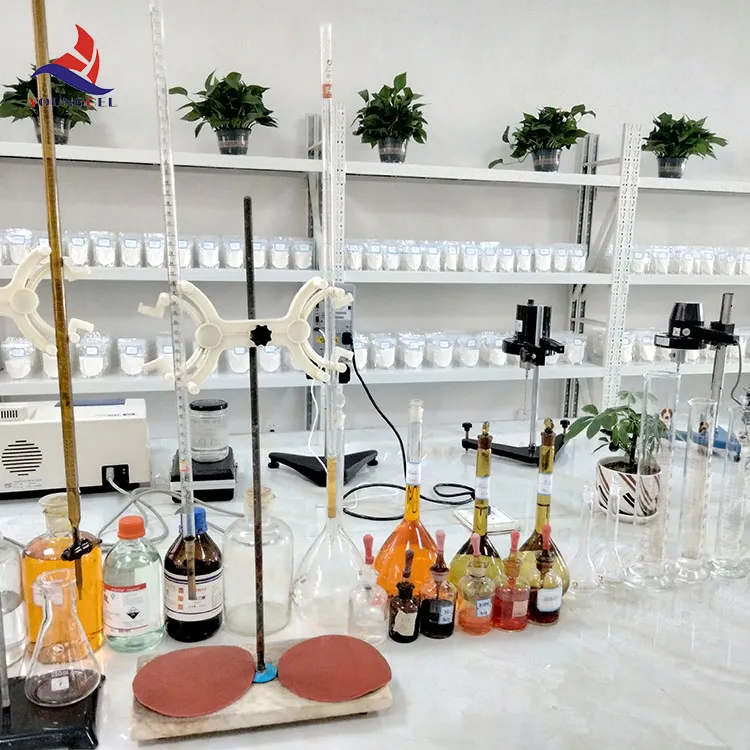The Versatility of Methyl Cellulose in Adhesive Applications
Methyl cellulose, a derivative of cellulose, has gained considerable attention in various industrial applications, particularly in adhesive formulations. This water-soluble polymer is synthesized by the methylation of natural cellulose, resulting in a compound that offers unique properties that make it ideal for diverse adhesive applications. In this article, we will explore the characteristics of methyl cellulose, its uses in adhesives, and the advantages it brings to the table.
What is Methyl Cellulose?
Methyl cellulose is a non-ionic, cellulose ether that is commonly used as a thickening and binding agent in various formulations. It is characterized by its ability to form gels when heated and revert to a liquid state upon cooling, a property known as thermoreversibility. This unique behavior, combined with its biocompatibility and non-toxicity, makes methyl cellulose a preferred choice in both food and pharmaceutical products, as well as in construction, cosmetics, and, importantly, adhesives.
Uses in Adhesive Formulations
In the realm of adhesives, methyl cellulose serves multiple roles. It acts as a thickener, stabilizer, and binder, thereby improving the overall performance of adhesive products. Its water-soluble nature means that it can be easily mixed with other ingredients without the need for organic solvents, making it an environmentally friendly option.
One of the most common uses of methyl cellulose in adhesives is in the production of tile adhesives, wallpaper pastes, and construction adhesives. The polymer enhances the viscosity of these products, ensuring proper adhesion while allowing for easy application. Methyl cellulose also provides excellent open time, which is the time during which an adhesive remains workable after application. This is crucial for ensuring that surfaces can align perfectly before the adhesive sets.
adhesive methyl cellulose

In the realm of woodworking, methyl cellulose is often used in the formulation of wood glues. The ability of methyl cellulose to form strong bonds when wet and its ability to maintain flexibility after drying make it an ideal choice for bonding wooden surfaces. Furthermore, its non-toxic nature ensures that it is safe for use in products that may come into contact with food or be used in homes with children and pets.
Advantages of Methyl Cellulose-Based Adhesives
The incorporation of methyl cellulose into adhesive formulations offers numerous advantages. Firstly, its versatility allows formulators to create adhesives that meet various performance criteria, including strength, flexibility, and water resistance.
Secondly, methyl cellulose-based adhesives exhibit excellent compatibility with a variety of substrates, including porous and non-porous surfaces. This broad range of adhesion capabilities makes them suitable for use in numerous applications, from construction and renovation to arts and crafts.
Another significant advantage is the environmental friendliness of methyl cellulose. As a biodegradable and renewable resource, it contributes to the development of sustainable adhesive products. This is particularly important in today's market, where there is an increasing demand for eco-friendly materials that reduce the environmental impact of manufacturing processes.
Conclusion
In summary, methyl cellulose is an incredibly versatile polymer that plays a crucial role in the development of various adhesive formulations. Its unique properties, such as water solubility, thermoreversibility, and non-toxicity, make it an ideal choice for use in adhesives across numerous industries. As the market continues to evolve, the application of methyl cellulose will likely expand, driven by the growing demand for environmentally friendly and high-performance adhesive solutions. As industries increasingly prioritize sustainability, methyl cellulose stands out as a valuable resource in creating adhesives that are both effective and eco-conscious.
-
Premium Detergent Grade HPMC Hydroxypropyl Methylcellulose: Superior Thickening & StabilityNewsAug.31,2025
-
HEC 100000 Hydroxyethylcellulose for Paint | Superior ThickeningNewsAug.30,2025
-
Wall Putty Rdp Powder Packaging DesignNewsAug.29,2025
-
Introduction to Hpmc Hydroxypropyl Methyl CellulosNewsAug.29,2025
-
Hpmc Industri Grade IntegrationNewsAug.29,2025
-
How to Choose the Right Construction AdhesiveNewsAug.29,2025




